[WATERLOGG PRODUCTIONS] Jazz-O-Rama Live Tue., August 2nd, 2016 on WPWL 103.7 -- Joe Bev presents... "16 Pieces of Silver"
1 view
Skip to first unread message
Blogger
Aug 2, 2016, 11:42:06 AM8/2/16
to waterloggp...@googlegroups.com
"16 Pieces of Silver"
Host Joe Bev plays two hours of the music of Horace Silver, surveying the 40-plus year career of the pianist and unsung hard bop and Afro-Cuban jazz pioneer.
01 - Stop Time
 |
| 1955. Horace Silver And The Jazz Messengers |
And The Jazz Messengers Released October 1956
Recorded November 13, 1954
February 6, 1955
Van Gelder Studio, Hackensack
Genre Jazz, Hard bop
Label Blue Note
BLP 1518
Producer Alfred Lion
Horace Silver - piano
Kenny Dorham - trumpet
Hank Mobley - tenor saxophone
Doug Watkins - bass
Art Blakey - drums
02 - Doodlin'
1955. Horace Silver And The Jazz Messengers
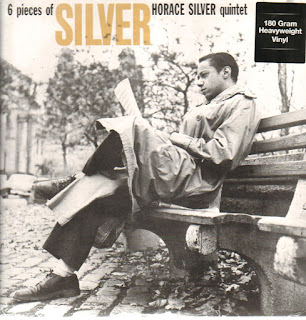 |
| 1956. Horace Silver - Six Pieces Of Silver |
1956. Horace Silver - Six Pieces Of Silver
Released January 1957
Recorded November 10, 1956
Van Gelder Studio, Hackensack
Genre Jazz
Label Blue Note
BLP 1539
Producer Alfred Lion
Horace Silver – piano
Donald Byrd – trumpet
Hank Mobley – tenor saxophone
Doug Watkins – bass
Louis Hayes – drums
 |
| 1959. Horace Silver - Blowin' The Blues Away |
04 - Blowin' The Blues Away
1959. Horace Silver - Blowin' The Blues Away
 |
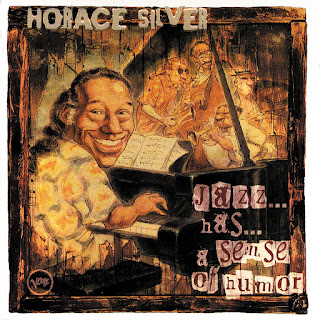 |
1959. Horace Silver - Blowin' The Blues Away
06 - Sister Sadie
1959. Horace Silver - Blowin' The Blues Away
07 - The Baghdad Blues
1959. Horace Silver - Blowin' The Blues Away
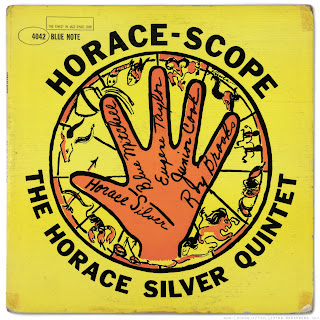 |
| 1960. Horace Silver - Horace-Scope |
1959. Horace Silver - Finger Poppin'
Released Mid-April 1959[1]
Recorded January 31, 1959
Van Gelder Studio, Hackensack
Genre Jazz, Hard Bop
Label Blue Note
BST 84008
Producer Alfred Lion
Horace Silver - piano
Blue Mitchell - trumpet
Junior Cook - tenor saxophone
Gene Taylor - bass
Louis Hayes - drums
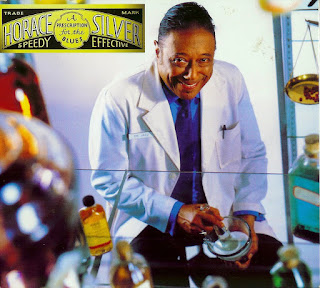 |
1960. Horace Silver - Horace-Scope
Released November 1960
Recorded July 8–9, 1960
Van Gelder Studio, Englewood Cliffs
Genre Jazz
Label Blue Note
BST 84042
Producer Alfred Lion
Horace Silver - piano
Blue Mitchell - trumpet
Junior Cook - tenor saxophone
Gene Taylor - bass
Roy Brooks - drums
 |
| 1964. Horace Silver - Song For My Father |
10 - Song For My Father
1964. Horace Silver - Song For My Father
Released End of January 1965
Recorded October 31, 1963; January 28 and October 26, 1964
Van Gelder Studio, Englewood Cliffs
Genre Jazz
Label Blue Note
BST 84185
Producer Alfred Lion
Horace Silver – piano
Carmell Jones – trumpet
Joe Henderson – tenor saxophone
Teddy Smith – bass
Roger Humphries – drums
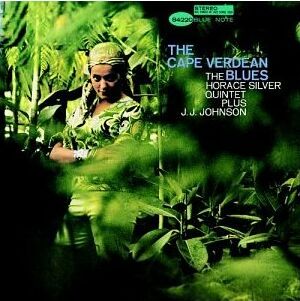 |
| 1965. Horace Silver, J.J. Johnson - The Cape Verdean Blues |
1965. Horace Silver, J.J. Johnson - The Cape Verdean Blues
Released Early January 1966
Recorded October 1 & 22, 1965
Van Gelder Studio, Englewood Cliffs
Genre Jazz
Label Blue Note
BST 84220
Producer Alfred Lion
Horace Silver - piano
Woody Shaw - trumpet
Joe Henderson - tenor sax
J.J. Johnson - trombone on tracks 4 - 6
Bob Cranshaw - bass
Roger Humphries - drums
 When Horace Silver once wrote out his rules for musical composition (in the liner notes to the 1968 record, Serenade to a Soul Sister), he expounded on the importance of "meaningful simplicity." The pianist could have just as easily been describing his own life. For more than fifty years, Silver has simply written some of the most enduring tunes in jazz while performing them in a distinctively personal style. It's all been straight forward enough, while decades of incredible experiences have provided the meaning.
When Horace Silver once wrote out his rules for musical composition (in the liner notes to the 1968 record, Serenade to a Soul Sister), he expounded on the importance of "meaningful simplicity." The pianist could have just as easily been describing his own life. For more than fifty years, Silver has simply written some of the most enduring tunes in jazz while performing them in a distinctively personal style. It's all been straight forward enough, while decades of incredible experiences have provided the meaning.
Silver was born in Norwalk, Connecticut on September 2, 1928. His father had immigrated to the United States from Cape Verde---and that island nation's Portuguese influences would play a big part in Silver's own music later on. When Silver was a teenager, he began playing both piano and saxophone while he listened to everything from boogie-woogie and blues to such modern musicians as Bud Powell and Thelonious Monk. As Silver's piano trio was working in Hartford, Connecticut, the group received saxophonist Stan Getz's attention in 1950. The saxophonist brought the band on the road and recorded three of Silver's compositions.
In 1951, Silver moved to New York City where he accompanied saxophonists Coleman Hawkins, Lester Young and many other legends. In the following year, he met the executives at Blue Note while working as a sideman for saxophonist Lou Donaldson. This meeting led to Silver signing with the label where he would remain until 1980. He also collaborated with Art Blakey in forming the Jazz Messengers during the early 1950s (which Blakey would continue to lead after Silver formed his own quintet in 1956).
During these years, Silver helped create the rhythmically forceful branch of jazz known as "hard bop" (chronicled in David H. Rosenthal's 1992 book, Hard Bop: Jazz and Black Music, 1955-1965). He based much of his own writing on blues and gospel---the latter is particularly prominent on one of his biggest tunes, "The Preacher." While his compositions at this time featured surprising tempo shifts and a range of melodic ideas, they immediately caught the attention of a wide audience. Silver's own piano playing easily shifted from aggressively percussive to lushly romantic within just a few bars. At the same time, his sharp use of repetition was funky even before that word could be used in polite company. Along with Silver's own work, his bands often featured such rising jazz stars as saxophonists Junior Cook and Hank Mobley, trumpeter Blue Mitchell, and drummer Louis Hayes. Some of his key albums from this period included Horace Silver Trio (1953), Horace Silver and the Jazz Messengers (1955), Six Pieces of Silver (1956) and Blowin' The Blues Away (1959), which includes his famous, "Sister Sadie." He also combined jazz with a sassy take on pop through the 1961 hit, "Filthy McNasty."
But it was a few years later when Silver would record one of his most famous songs, the title track to his 1964 album, Song For My Father. That piece combined his dad's take on Cape Verdean folk music (with a hint of Brazilian Carnival rhythms) into an enduring F-minor jazz composition. Over the years, it has become an American popular music standard, covered not only by scores of instrumentalists, but also such singers as James Brown.
As social and cultural upheavals shook the nation during the late 1960s and early 1970s, Silver responded to these changes through music. He commented directly on the new scene through a trio of records called United States of Mind (1970-1972) that featured the spirited vocals of Andy Bey. The composer got deeper into cosmic philosophy as his group, Silver 'N Strings, recorded Silver 'N Strings Play The Music of the Spheres (1979).
After Silver's long tenure with Blue Note ended, he continued to create vital music. The 1985 album, Continuity of Spirit (Silveto), features his unique orchestral collaborations. In the 1990s, Silver directly answered the urban popular music that had been largely built from his influence on It's Got To Be Funky (Columbia, 1993). On Jazz Has A Sense of Humor (Verve, 1998), he shows his younger group of sidemen the true meaning of the music.
Now living surrounded by a devoted family in California, Silver has received much of the recognition due a venerable jazz icon. In 2005, the National Academy of Recording Arts and Sciences (NARAS) gave him its President's Merit Award. Silver is also anxious to tell the world his life story in his own words as he just completed writing his autobiography, Let's Get To The Nitty Gritty (University of California Press, scheduled for fall 2006 release).
| OUR AUDIO BOOKS: http://waterlogg.com/ buy.html | OUR PODCASTS: http://waterlogg.com/ waterlogg-radio-network.htm | Joe's IMDB: http://www.imdb.com/ name/nm5327470/ |
--
Posted By Blogger to WATERLOGG PRODUCTIONS at 8/02/2016 11:42:00 AM
Reply all
Reply to author
Forward
0 new messages








